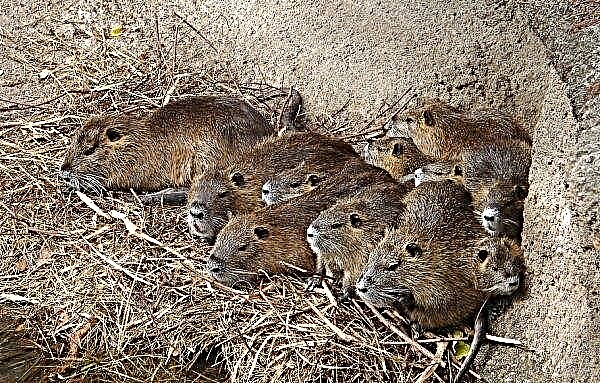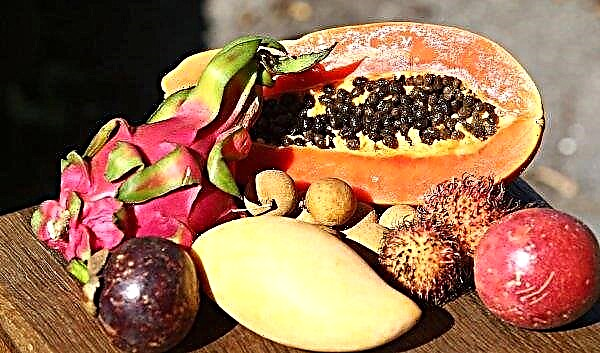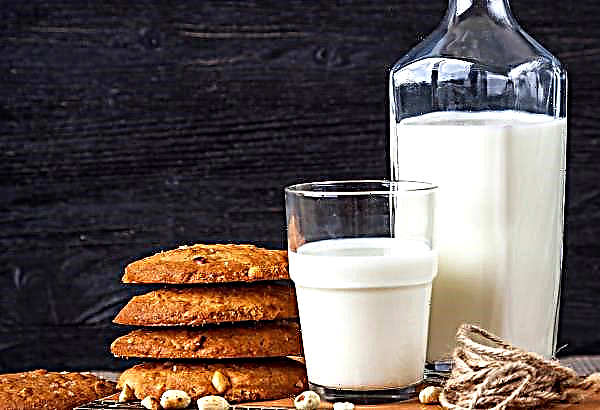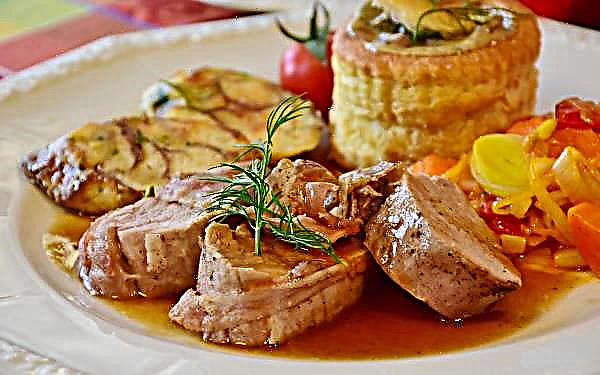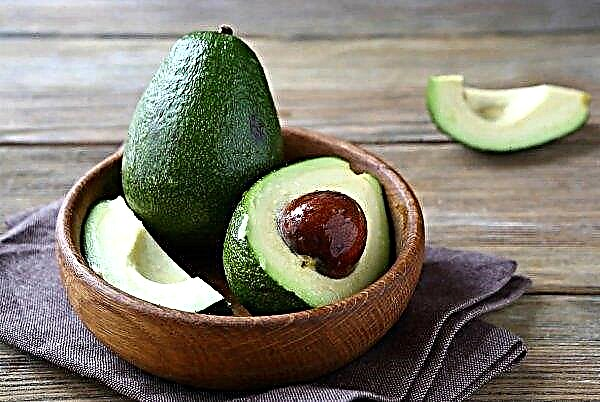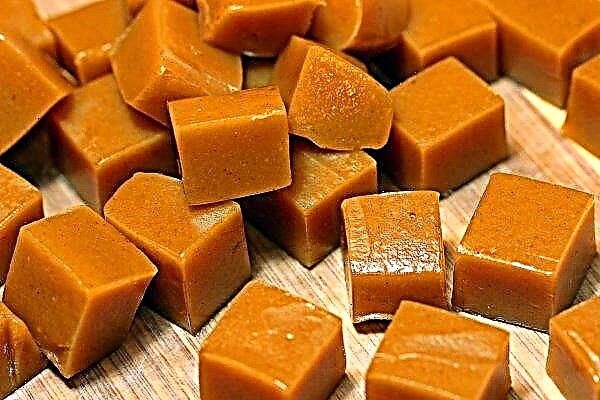Jasmine is an evergreen shrub with very fragrant flowers, which is usually grown in open ground. However, few people know that some varieties of this plant have long and successfully been bred as an indoor flower. A striking example of this is jasmine polyanthus, or multi-flowered, which will be discussed below.
Botanical Description
The Latin name of the variety - Jasminum polyanthum - indicates the main feature that distinguishes it from other related forms. "Polyanthus" literally translates as "multi-flowered." This term, used in relation to different plants, for example, roses, is of ancient Greek origin and is derived from two words - "poly", that is, numerous, and "anthes" - a flower.

The main botanical characteristics of multiflowered jasmine are given in the table:
| Structure, maximum dimensions, growth rate | Liana The height of the shoots in nature can reach 10 m, at home - 2 m. The average growth per season is 1.5–2 m. |
| Leaves | Cirrus, composed of several plates, opposite arrangement, leaf length 50–70 mm, petiole 4–20 mm. |
| Type of inflorescence | Panicle. |
| The number of flowers in the inflorescence | 5-6 pcs. (in nature - up to 50). |
| The place of formation of inflorescences | The tops or sinuses of young shoots. |
| Flower coloring | During the budding period, lilac, as it blooms, becomes white. |
| Flower shape | Star-shaped. |
| Bract | Awl-shaped, 1–6 mm long. |
| Peduncle length | 5–25 mm. |
| Fetus | Berry, round shape, black, size (diameter) - 6-12 mm. |
Jasminum polyanthum blooms, as a rule, once a year, however, both the duration and the time of onset of flowering vary greatly depending on growing conditions and other factors. So, from the moment the first buds appear until the last flower dries, it can take from 3 weeks to 2–2.5 months, and this happens almost at any time of the year, except for the last two months of autumn and the first two months of winter, when the plant is usually in a state of hibernation.
Another feature of multi-flowered jasmine that cannot be ignored is incredibly rich, even slightly sugary aroma. During the flowering period, the plant is able to fill with its smell the whole room in which it is located.
Did you know? According to ancient Chinese esoteric art, feng shui, jasmine is a symbol of sensuality, femininity and attractiveness.
Features of home care
Growing polyanthus jasmine as a whole does not cause problems, but there is one important feature that you need to know about. To achieve active flowering, the plant must necessarily provide a change in the phases of active vegetation and subsequent dormancy. Therefore, the conditions that Jasminum polyanthum needs to be created in winter and summer have cardinal differences.
Air temperature and humidity
In the period of active sap flow (from late winter to late autumn or until flowering is complete), multi-flowered jasmine prefers moderate heat. The ideal temperature for the flower will be the range + 20 ... + 25 ° С. If the air warms up more strongly, the plant develops slightly worse, stress also causes cooling to + 15 ° C.

Nevertheless, experienced flower growers argue that the following factors play a much more important role than temperature as such for jasmine:
- lack of drafts (you can not put the pot near the window, which often opens, or in the immediate vicinity of the front door);
- remoteness from a source of intense heat (for example, household heating appliances);
- good air humidification (not to be confused with dampness; its jasmine does not tolerate);
- stable thermal performance day and night (lack of sudden changes);
- correct light mode.
In the summer, a pot with polyanthus jasmine can be taken out to the balcony or even taken to the country: outdoors, the plant has a much less chance of drying out or freezing, than in a stuffy apartment with periodically turned on air conditioning.
Did you know? The white jasmine flower is the official symbol of Pakistan, and also, along with Rafflesia Arnoldi and the moon orchid, has the same status in Indonesia. A significant role here is played by the fact that the name of the plant (“yasmin”) from the Persian language translates as “the gift of God,” and for Muslim states it is of great importance.
The wintering period involves a decrease in temperature to + 10 ... + 12 ° C, so if you have a closed balcony, it can be used to transfer the flower there.

At the same time, watering is reduced to a minimum, feeding is completely stopped, and the place is chosen as shaded as possible.
Low humidity is one of the probable reasons why Jasminum polyanthum does not bloom, or bloom is sparse and very short-lived.. In hot weather or in winter, if the flower is in a heated room, where there is no special humidifier, it is necessary to increase humidity in another way.
You can spray the aerial part of the plant with spray water at least twice a day - but this is not very convenient, in addition, during the flowering period this technique cannot be used, as well as during the period when the flower is intensively lit, that is, exactly when it most needs hydration.
Instead of spraying it is better to use one of the following methods to combat excessive dryness:
- install in the immediate vicinity of the flower pot a large capacity with water;
- put a jasmine flowerpot in a larger container, into which water-absorbing material - sand, expanded clay, sphagnum moss, peat, etc. should be added over the free area, after which it is easy to ensure that such a "pillow" always remains well moistened;
- put on the windowsill next to jasmine indoor flowers that evaporate a large amount of moisture - spathiphyllum, cyperus, pogonaterums (indoor bamboos), etc., and regularly water them, preventing the soil from drying out;
- you can also use any other indoor flowers with a large amount of green mass as “donors” of moisture, for example, aspidistra, dedermacher, roicissus.
Each of the above methods will provide jasmine with a much longer hydration than any, even very frequent spraying.

Lighting
All jasmines are light-loving plants, and Jasminum polyanthum is no exception. But direct sunlight for the flower is destructive (especially during flowering), so the place for the flowerpot must be selected so that the maximum amount of light jasmine receives in the morning or evening (the first option is more preferable). Thus, the north side for the plant as a whole is not suitable, although for the period of winter dormancy, the flower can be placed here if the room is cool enough for this. By the way, of all indoor jasmines, only polyanthus does not need additional illumination in winter, which greatly simplifies the task for the grower.
Windows facing south can only be considered a potential place to install a pot if they are equipped with modern blinds or another shading system, which, on the one hand, will not block the light from the flower, and on the other, it will make the lighting scattered.
Important! Florists are strongly advised not to put polyanthus jasmine in the bedroom. With all its beneficial properties, this plant has an overly intense aroma, the prolonged exposure of which to the olfactory receptors can cause severe headache and even suffocation.
Soil selection for planting and transplanting
Jasminum polyanthum grows best on well-drained, light and loose soil with a slightly acidic reaction (acid-base pH balance in the range of 5.5–6.5). It is very important that the soil passes air well and does not hold excess water.
For planting or transplanting a plant, you can purchase a universal soil mixture in a specialized store, but this option is not considered the most successful, because it may contain too high lime content, and the jasmine species in question (unlike most of its relatives, such as indoor Jasminum sambac, for example) exhibits very low tolerance. Therefore, it is better to purchase and mix in the ratio 2: 1 two types of substrate: the first for begonias or roses, the second for azaleas.

A more complex option involves the independent production of a soil mixture. It is made from the following components, which must be used in different proportions, depending on the age of the flower:
| The constituent element in the preparation of the soil mixture | Young plant | Adult plant |
| Sand | 25% | 20% |
| Peat | 25% | 20% |
| Turfy soil | 25% | 35% |
| Sheet soil | 25% | 35% |
Before filling the flowerpot with the prepared mixture, it is necessary to lay out a drainage layer in it - expanded clay, crushed stone or ordinary river sand, previously calcined in the oven for the purpose of disinfection.
It is necessary to transplant Jasminum polyanthum every year for the first five years of life, in the subsequent frequency of procedures can be reduced by 2-3 times. The optimal period for transplantation is to leave the state of rest, when the sap flow has not yet entered the active phase. You should not move the flower to a much more voluminous container than the one in which it grew. This mistake, common among inexperienced gardeners, leads to the fact that the plant takes root in a new place for a very long time, because of which it may not bloom for several years.

Watering and feeding
Watering multi-flowered jasmine is necessary quite often, because, in comparison with other indoor plants, the need for moisture in this flower is quite high.
However, it must be remembered that the regularity of the procedure, as well as the amount of water consumed at the same time, depends on several factors, including such as:
- vegetation phase (during the dormant period, watering is carried out only so that the earthen lump in the pot does not completely dry out);
- ambient temperature (the warmer the room, the more often and plentifully watering should be, and vice versa);
- humidity (the higher it is, the less the plant needs watering).
Important! To maintain the level of soil acidity required by polyanthus jasmine 1-2 times a month, water for irrigation should be acidified by adding apple cider vinegar, citric acid or freshly squeezed lemon juice at the rate of 1 tsp. per 1 liter (the concentration should be such that the acid does not taste).
When carrying out humidification, the following important rules must also be observed:
- The water should be soft: it is best to use melted snow or bottled water. If this is not possible, you can get rid of excess salts by standing the liquid well in an open container.
- You can not use cold water for irrigation: its temperature should not be lower than the temperature of the air in the room, and ideally - exceed it by 1-2 ° C.
- The fact that the plant needs watering can be judged by the depth of drying of the soil in the pot: about 1-2 cm from the surface, the soil should always remain moist.
- Estimated frequency of jasmine watering in the hot season is 2-3 times a week.
- Reducing watering before the plant goes into hibernation should not be sharp, the flower should be prepared gradually for wintering.

Jasmine should be fed only during the period of active vegetation - from the end of winter to the beginning of autumn. The frequency of the procedure is approximately 2 times per month for mineral fertilizers and 1 time per month for organic fertilizers. For young plants, more intensive dressing with potash fertilizers is allowed - up to 1 time per week. After transplanting, fertilizers are not applied for at least 2-3 weeks, so as not to burn the root system, which did not have time to strengthen.
As a preparation for mineral dressing, any universal remedy for flowering indoor plants (preferably in liquid form) is suitable, for example:
- "Success";
- "Green Guy";
- "Magic mix" for flowering plants;
- "Master Agro";
- "Clear sheet";
- "NPK incentive";
- "Agronomist Profi";
- "TM Planta";
- "Policote";
- "Compo";
- "Yara vila";
- Loren
- "Gilea" and many others. other
 It is necessary to breed the drug strictly in the proportion specified by the manufacturer, since an excess of fertilizer can cause jasmine more harm than a complete lack of top dressing
It is necessary to breed the drug strictly in the proportion specified by the manufacturer, since an excess of fertilizer can cause jasmine more harm than a complete lack of top dressing
The best organic fertilizers - ash, lake silt, humus, humates, biohumus, etc.. However, when using them, you need to keep in mind that many complex preparations for indoor plants contain both a mineral and an organic component, therefore, when using them, nothing more needs to be acquired and added to the soil.

Haircut and Shaping
Polyanthus jasmine has a very high growth rate, so regular pruning is a prerequisite for maintaining the decorativeness of the plant. This procedure is also important for active and prolonged flowering, since, on the one hand, buds are mainly formed on young shoots, and pruning stimulates their growth, on the other hand, in the absence of control over the set of green mass, the root system simply cannot provide the aerial part enough nutrients to plant flowers.
Did you know? An Indian legend tells of a girl named Jasmine who fell in love with the sun god, but did not find reciprocity and committed suicide by burning in the rays of her beloved. The sun turned the ashes of its failed beloved into a beautiful and fragrant bush, but its flowers bloom only at night, so as not to remind themselves of a cruel deity.
Florists recommend cutting polyanthus jasmine every year, but there are several opinions regarding the optimal time for this, although most often they choose either the period when the plant leaves the dormant phase (late February - early March), or, on the contrary, the moment of flowering completion and, accordingly, leaving in hibernation.
Cropping involves:
- removal of dried inflorescences, as well as damaged and diseased branches;
- shortening of all other stems: strong - by 30%, weak - by 50% (if the plant has grown too much, it can be rejuvenated by cutting off all shoots by 70%);
- selective pinching of young shoots to 6–8 paired leaves.

Polyanthus jasmine can be formed as a vine with one powerful shoot braided around a decorative support (it can be made independently by taking a wooden or metal pole as a basis and wrapping it tightly with a twine).
Pest and Disease Control
With proper care, Jasminum polyanthum rarely gets sick, however, some infections, as well as pests, can infect a flower by hitting it from neighboring houseplants. Sometimes pathogenic microflora is brought into the room with air, for example, through an open window, or on shoes or clothes, pet hair after walking, etc. Therefore jasmine should always be carefully monitored in order to detect and stop the problem on time.
Among pests that parasitize on a multi-flowered houseplant, they are primarily mentioned whiteflies, aphids, scale insects, thrips, as well as spider red mites. The lesion usually begins on the underside of the sheet, then the plate can change color, curl, dry and fall off. The specific symptoms depend on the type of parasite, but since most modern insecticidal drugs have a wide range of effects, an accurate diagnosis is not necessary.

At the initial stages of infection, you can try to save the flower with folk remedies - carefully spray the entire aerial part with a soap solution, infusion of garlic, tobacco, onions, hot pepper or another plant with a strong and pungent odor.
In the absence of effect, stronger means are used for processing, for example:
- "Dr. Foley";
- “Dr. The effect";
- Kaputt
- Slox-Eco;
- "Bioreid";
- Fitoverm;
- “Quitofor”;
- "Provado", etc.
Important! Potent pesticides used to control pests in a garden plot are far from always suitable for indoor plants because of their high toxicity - spraying such products indoors, especially in residential buildings, can be dangerous for its inhabitants.
Of the fungal diseases, jasmine most often suffers from root rot and soot fungus. It is almost impossible to deal with such problems; the only thing you can try is a quick transplant into a new pot with a complete change of land.
At the same time, the development of the disease can be prevented if you know the causes that cause it.. So, root decay almost always occurs against a background of irrigation or lack of drainage (drainage holes), which leads to stagnation of water in the pot. As for the sooty fungus, its carrier is most often the red spider mite, so timely control of this pest is the best prevention of the disease.

Breeding
Like any other vine, multi-flowered jasmine is quite easily propagated by cuttings. Their rooting is very convenient to combine with pruning, as a result of which the gardener usually has an abundance of planting material.
It is recommended to use young green shoots cut from the lateral two-year shoot as a cuttings, and a fragment of the latter can also be left as a basis. In total, the handle should have at least 3 kidneys, with the lower cut performed immediately below the kidney, and the upper one 1 cm away from the internode. When harvesting cuttings, you need to use a very sharp knife, previously rubbed with alcohol or hydrogen peroxide.
The presence of leaves on the handle complicates the rooting process, since the sheet plate evaporates too much liquid from its area. Therefore, the leaves must either be cut off (carefully so as not to damage the kidney), or shortened by 2/3. It is recommended that the stalk prepared in this way be soaked for 5-6 hours in a weak solution of potassium permanganate, or powdered with powdered activated carbon for disinfection. Pretreatment of planting material with a growth stimulator (Kornevin, Epin, Heteroauxin, etc.) is also very useful.

But to keep jasmine cuttings in water until the formation of roots is not necessary.
Rooting is more reliable to carry out directly in the ground, or rather, in a light substrate of mixed in equal parts:
- peat and sand;
- fertile soil for jasmine (composition described above) and perlite.
Any of the above mixes allows the cuttings to take root 3-4 weeks after planting. To do this, a container with planting material needs only to be installed in a bright and warm (about + 20 ° C) place, protected from direct sunlight and drafts, and periodically watered by spraying. To create a greenhouse effect, the box with cuttings can be covered with a film or plastic bag.
When the shoots begin to form young leaves, plants can be transplanted to a permanent place in a separate pot with a diameter of not more than 7 cm.
Jasmine as a houseplant is original and very beautiful. Jasminum polyanthum is the best suited for these purposes, the distinguishing feature of which is the abundance of flowers and their very rich aroma, as well as an unusual liana-like crown shape. It is not difficult to grow it as a whole: it is enough just to provide the flower with regular watering and moisturizing, timely pruning and competent alternation of the vegetation phase with a dormant period during which the plant will be able to accumulate strength for laying a large number of buds next year.

